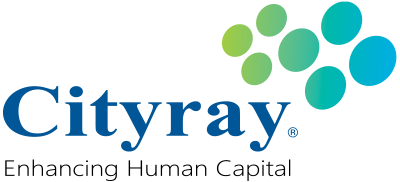How to choose a suitable Shift Roster for your company | Cityray
Creating an effective shift roster is a critical and hardest jobs for the HR, but it has a lot of benefits when you have a well-planned shift roster.
How to choose a suitable Shift Roster for your company
Creating an effective and efficient shift roster is one of the most critical and hardest jobs for the HR department. This becomes more challenging when balancing your company’s needs, your employees’ choices, and the obligations of labour laws—particularly those in Singapore and Malaysia. However, it has a lot of benefits when you have a well-planned shift roster; it can significantly boost workplace productivity and satisfaction. This detailed tutorial seeks to disentangle the intricacies of this action, addressing the advantages of a successful shift roster, essential factors in its construction, and how innovative technologies such as Cityray’s shift roster software may make this process easily while also streamlining your business operations.
What is Shift Roster or Schedule Roster
A shift roster, often known as a working roster or a schedule roster is a meticulously structured calendar that lists each member of your team’s working hours, shifts, and days off. It serves as a strategic plan for the effective distribution of work among your team members, with the purpose of enhancing productivity, ensuring equal shift rotation, and increasing overall staff efficiency. More important, a shift roster (schedule roster) is dynamic records that may need to be updated over time to reflect changes in your business operations or employee characteristics.
Benefit of Using a Shift Roster
A well-designed and implemented shift roster can provide various benefits to your company:
Optimum Resource Utilization
An efficient schedule roster ensures that you have the correct amount of employees available during peak hours while avoiding overstaffing during slower periods. You can dramatically increase your company’s operational efficiency by aligning your staffing numbers with demand.
Boosted Staff Satisfaction
A shift roster that takes into account employee preferences and guarantees equitable shift distribution can result in higher levels of job satisfaction. You may boost employee morale and reduce turnover by creating a more engaging office environment.
Increased Productivity
An effective schedule roster encourages improved time management, lowers the likelihood of employee tiredness, and lessens the chance of burnout. Employees that are well-rested and contented are more likely to be productive, resulting in higher output and quality of work.
Regulatory Compliance
A shift roster that follows labour standards governing working hours, breaks, and overtime guarantees that your company remains compliant. This can shield you from potential legal issues as well as your company’s reputation.
How to make a Shift Roster or Schedule Roster
Then, how can we contract a useful shift roster or schedule roster? Making a successful shift roster or schedule roster takes extensive planning and decision-making. The procedures outlined below show how to create a thorough and successful shift roster or schedule roster:
Analyze Workload and Identify Demand Patterns
allows you to estimate the number of personnel required for each shift, ensuring that your team is never overworked or underutilized. It is an important procedure to create a shift roster (schedule roster).
Balance Employee Preferences with Business Needs
How to balance the employees’ expectation and the business need is a big topic, 1 tip here: Keep considerate your employees’ preferred schedules when constructing your working roster, and keep an eye out for fostering work-life balance. By incorporating your employees in the scheduling process, you can learn more about their preferred work hours and days off. This not only generates a more positive work environment, but also higher levels of job satisfaction, which can have a positive impact on retention rates and overall team morale. A satisfaction work environment can help you to gain the loyalty of your employee, your employee will stay more long-lasting.
Working Roster or Schedule roster is not only solve the business needs at that moment, also as possible as you can to satisfy employees, it can reduce your workload in other aspect in long term, such as recruitment.
Choose the Right Shift Rotation and Flexibility
Then, you will have another question: How to choose a right shift roster (schedule roster) and have flexibility to solve some situations that occur suddenly. The structure of your shift rotation can have a significant impact on the effectiveness of your squad. You can choose between a fixed and a rotating schedule, each with its own set of advantages. A stable schedule roster gives your team continuity, whereas a rotating calendar fosters fairness by more equally allocating popular and less loved shifts around the team. Another crucial consideration is adaptability. Life is unpredictable, and having the flexibility to adapt your roster to meet unforeseen changes or emergencies will help you keep your firm running smoothly and your staff pleased.
Align Skills and Expertise with Shift Requirements
Not enough, we also need to deal with the business needs when you prepare the schedule roster or working roster. To maximize your employees’ skills and expertise, assign shifts based on the particular competencies necessary during each work hour. This is especially true in enterprises where certain actions require specialized expertise or experience. By assigning employees to shifts where their abilities are most utilized, you not only improve their performance but also increase your company’s overall efficiency.
So, when you design a working roster (schedule roster), you need to consider who can distribute the suitable skills and experience with suitable duties. To avoid the situation of man-power mismatching.
Stay Compliant with labour Laws and Regulations
Out of the practical concerns, another crucial considerations when constructing your schedule roster (shift roster) is that it complies with Singapore and Malaysian labour laws. To prevent legal issues, your schedule roster (roster shift schedule) must adhere to all working hours, rest breaks, and overtime restrictions. It’s vital to stay up to date on these regulations because noncompliance can result in penalties that hurt your company’s reputation and financial standing.
Incorporate Shift Rostering Tools and Software
Consider using shift rostering tools and software such as Cityray to make scheduling easy. These systems can automate the majority of the roster construction process, build shift rosters (schedule rosters) based on employee preferences and availability, and speed up the administration of time off requests and shift swaps. Using these tools will save you time and reduce the likelihood of human error, making your shift scheduling process more efficient and less stressful.
Communicate Clearly and Transparently with Your Team
Maintaining open and transparent communication with your staff is critical when introducing a new shift roster. Changes should be properly explained, and input should be encouraged. Giving your employees the freedom to express themselves can help to create a more inclusive and courteous work environment.
Implement and Test the New Shift Roster
Conduct a trial run to test the effectiveness of the new roster before fully implementing it. This testing time allows you to collect input from your team, evaluate the system’s functionality, and make any necessary changes before launching on a larger scale. You can reduce disruptions and facilitate a smoother transition to the new roster by doing so.
Monitor and Evaluate Work Roster Performance
Once your new roster is in place, it is critical to evaluate its efficacy on a regular basis. Keep an eye on how it affects productivity, efficiency, and employee satisfaction, and be prepared to make changes as needed. Continuous evaluation and adjusting ensure that your roster remains optimally effective and aligned with the ever-changing needs of your organization.
How can you apply the Roster shift schedule ?
Full-Time Shift Roster
An average full-time workweek is around 44 hours in Singapore and around 41 hours in Malaysia , excluding lunch breaks. This means that full-time employees must commit to 9 hours per day for five days or fewer each week in Singapore or 8 hours per day for five days or fewer each week in Malaysia, or 7 hours per day for more than five days per week in Singapore and Malaysia. Full-time work schedules vary by company and are determined by operating hours. Full-time employees, the difference to part-time roster, full-time employee can anticipate the same roster shift schedule.
Part-Time Shift Roster
About the part-time roster, the most evident distinction between full-time and part-time roster is the number of hours needed for employees. Part-time work is defined as any work schedule that has less hours than a full-time roster. Some employees may prefer part-time work because it provides them greater flexibility.
In most situations, the part-time roster will communicate with both employee and employer, because the employee can provide their availability to the company, and the company will ensure to maximize the part-time employees’ contribution.
In General, the part-time roster will be arranged after the full-time work schedule and workload are confirmed.
Alternate Shift Roster
Alternate shift roster refers to any work schedule that is not “full-time.” Flexible timetables, part-time roster, and rotating shift schedules are examples of alternate rosters. In most organizations, these schedules are used to accommodate specific needs of employees, such as medical issues or pregnancies.
Some suitable industries for applying the Shift Roster
Shift rosters can be quite useful in a variety of situations:
Healthcare Facilities
In hospitals and clinics, staff availability is required round-the-clock to provide uninterrupted healthcare services. Here, shift rosters are indispensable in managing the workforce.
Call Centers
Staff availability is essential around the clock in hospitals and clinics to deliver uninterrupted healthcare services. In this case, shift rosters are critical for workforce management.
Retail Businesses
Retail shops might change their operating hours depending on customer traffic. They may coordinate worker numbers to match demand by using a roster, giving the greatest possible service for clients.
Manufacturing Industries
Manufacturing units frequently need to change their operating hours to meet production demands. They can adjust their workforce levels to demand by using a shift roster, assuring optimal productivity and efficiency.
Points of consider how to choose the Shift Roster for your company
Please consider carefully in Several aspect when you deciding on the best shift roster for your company:
Workload and Demand
Understanding your company’s workload and demand patterns is critical for developing a roster that matches staffing numbers to business requirements.
Staff Preferences and Work-Life Balance
When constructing your roster, keep your employees’ preferences and well-being in mind. Aim to create a timetable that meets their demands while encouraging a good work-life balance.
Shift Rotation and Flexibility
Consider whether a permanent or rotating roster would be ideal for your company, and whether shift scheduling flexibility is required.
Required Skills and Expertise
Make certain that the abilities and expertise required for different shifts are taken into account. To maximize efficiency, the appropriate staff should be assigned to the proper shifts.
Legal Compliance
Keep up to date with Malaysian and Singaporean labour rules and regulations. To avoid legal difficulties, make sure your roster follows all of these standards.
How can cityray’s shift roster help?
The comprehensive shift roster software from Cityray provides a simple solution for designing and monitoring shift schedules. Here’s how Cityray’s Roster Shift Schedule can benefit your company:
Optimal Roster Creation
The software creates ideal staffing plans depending on your company’s needs and labour laws. This saves you time while also ensuring compliance.
Enhanced Communication
The platform improves communication by successfully managing leave requests, regulating overtime, and tracking staff attendance. By centralizing these tasks, the likelihood of misunderstandings or miscommunications is reduced.
Finally, mastering the difficult process of shift rostering is critical for the smooth operation of your organization and employee satisfaction. A well-crafted shift roster, aided by tools such as Cityray’s shift planning solutions, may assist you in maximizing resource use and increasing productivity. You may develop a shift roster that delivers long-term benefits to your firm by taking into account the unique needs of your workers and the demands of your business.
Note: The informative content of this article is for your information only. We recommend that you consult your HR or Human Resources professional for specific guidance on how to organise shift work to suit your company’s needs.




